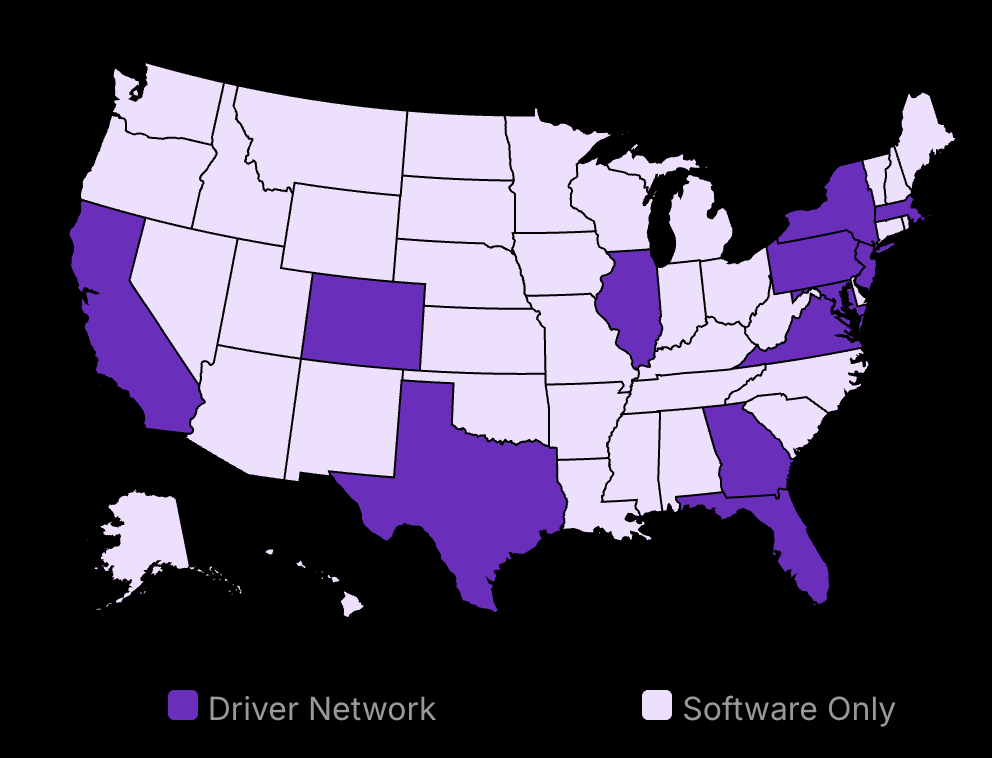Small business marketing in 2025 looks very different from what I knew before. But here is some good news. The businesses that adapted to new search engine marketing strategies saw their market share and customer base grow in the first quarter of 2025.
What is their secret? They stopped following outdated advice and started using methods that actually work today by using business websites, email marketing, and public relations to attract both prospective and new customers efficiently.
In this article, we gathered the 10 most specific marketing approaches successful businesses share. These aren’t complex strategies—they’re smart, cost-effective methods that work now. From press releases to direct mail, and from trade shows to radio ads, businesses are using a mix of digital and traditional tactics to engage ideal customers where they spend their time.
One effective strategy is utilizing banner ads, which have evolved significantly over the years. Today, well-designed banners can effectively grab attention and drive conversions when placed strategically on relevant websites. For deeper insights on making banners that captivate consumers and enhance your sales, check out our resource on effective banner ads.
What makes these methods different? They cost less than traditional advertising costs but bring better results. By utilizing online searches, video tutorials, and large social media platforms like YouTube or other marketing channels, businesses are reaching more prospective customers with precision.
Tools with advanced features help track customer behavior, ensuring that businesses can stay informed and continuously refine their strategies.
This post breaks down these 10 smart ways to market your business’s products and services online, helping you connect with target customers effectively. You’ll also find helpful resources to optimize your approach, whether you’re working on collecting information about your audience or refining your product line to meet demand.
Let’s look at what’s working in marketing right now, and how you can use these methods to grow your business in 2025. With the right strategy, your business name can stand out from many businesses competing for attention.

Lower your delivery costs by 23%
How we reduce costs:
- No delivery vehicle expenses
- Optimized local routes
- Pay-per-delivery model
- Average 23% delivery cost reduction
Employ Innovative Marketing Strategies for 2025
-
Focus on user-generated content to build trust and authenticity.
-
Partner with influencers to expand reach and credibility.
-
Use storytelling to create engaging and relatable brand narratives.
1. Embrace User-Generated Content
User-generated content (UGC) is a powerful marketing tool. Today, people find UGC more trustworthy than content crafted by brands. This authenticity often leads to conversion and brand loyalty. Encouraging customers to share their experiences with your products or services can amplify your brand’s message. Social media platforms play a crucial role here.
They make it easy for consumers to share their experiences. Hosting challenges or contests can further galvanize this engagement, spurring a community of active participants around your brand. When customers feel part of a community, they are more likely to stay loyal. Books like “Contagious: How to Build Word of Mouth in the Digital Age” by Jonah Berger can offer deeper insights into crafting viral content. The pros are the high level of trust and engagement, but the downside is the unpredictability of the content created.
As a next essential step, professionals might explore platforms that specialize in UGC, such as Yotpo or Bazaarvoice, to broaden their strategy.
2. Leverage Influencer Collaborations
Working with influencers can expand your brand’s reach rapidly. Influencers who align with your brand’s values can present your products authentically to their followers, creating natural connections with your target audience.
Tailoring partnerships to ensure both sides benefit maximizes impact. Performance tracking is vital; it helps you understand which collaborations are successful and which aren’t. Adjust strategies based on this data to improve results over time. “Influencer Marketing Strategy” by Gordon Glenister is a recommended read for those seeking to delve into efficient collaboration models.
Some might argue that influencer marketing can feel insincere if not executed carefully. However, the opportunity for authentic engagement and reach makes influencer marketing an indispensable strategy.
Consumer Engagement: Over 80% of marketers affirm that influencer marketing is a highly effective strategy, with a notable emphasis on long-term partnerships with influencers.
3. Utilize Storytelling Techniques
Storytelling in marketing goes beyond mere content creation. It’s about weaving a narrative that resonates emotionally with your audience. Stories help form connections and communicate what your brand stands for. Using platforms like YouTube, Instagram Stories, or podcasts can get your narratives in front of diverse audiences.
Analyze feedback to refine your storytelling strategies, ensuring they’re as engaging as they are effective. The book “Building a StoryBrand” by Donald Miller offers excellent strategies for constructing brand narratives. The strength of storytelling lies in its ability to emotionally engage, but it may not resonate with everyone. Testing different narratives helps in identifying what stories work best for your brand.
Addressing Common Questions in Creative Marketing
To creatively market a product while managing marketing costs, think beyond traditional marketing methods. Focus on connecting with your audience emotionally or experientially to increase engagement and drive customers to buy. The ‘3-3-3 rule’ in marketing involves ensuring that your key message is communicated within three seconds, typically through three main points or benefits.
Understanding the 7 P’s of marketing (Product, Price, Place, Promotion, People, Process, and Physical Evidence) also helps tailor strategies to specific business contexts. Incorporating demographic information allows businesses to refine their messaging and target the right audience more effectively.
To bring novelty into marketing, consider personalization—tailoring messages to individual customer needs can make marketing feel more like a two-way conversation. Leveraging insights from other sites and industry leaders helps refine your approach. Following essential steps such as audience research, campaign testing, and performance tracking ensures a successful marketing strategy. For those seeking inspiration, check out these innovative advertisement examples that can spark ideas for your next campaign. Exploring successful ad campaigns can provide valuable insights into what resonates with audiences and how you can create impactful marketing strategies.
Books like This is Marketing by Seth Godin provide more insights into creative marketing approaches in the modern age, with practical examples to guide professionals.
Enhance Digital Presence to Reach Potential Customers in 2025
Adapt to voice search to capture a growing audience.
Prioritize short videos for deeper engagement.
Use interactive content to boost user participation.
4. Optimize for Voice Search
Adjusting to the rise in voice search is crucial. Natural language and conversational keywords should be a primary focus. Considering that 157 million Americans rely on voice search, it is key to ensure your content aligns with how people phrase their queries when speaking, not typing.
Voice Search Surge: With over 1 billion voice searches each month and 27% of mobile queries being voice-based, updating your SEO strategies is vital.
To keep ahead, regular testing and monitoring of search results are necessary. Use tools like Google’s Search Console to track how well your site appears in voice-driven searches. Organizations such as the Digital Marketing Institute offer resources and courses to learn more about voice search optimization. To dive deeper into these tactics, books like “Voice Search Marketing” by Patrick Deenan are recommended. Critics argue that focusing too much on voice can neglect text-based users, but the growth in voice search can’t be ignored.
Local SEO: 76% of voice search users seek local business information, indicating the importance of local SEO strategies.
5. Invest in Short Video Content
Short videos are reshaping how businesses reach audiences. Platforms like TikTok and Instagram Reels lead this trend. The short, engaging format of these videos captures users’ attention quickly. With video ads on the rise, brands note that they earn the most from short videos, this medium is worth the investment.
Market Growth: The digital video advertising market is forecasted to increase by $527.6 billion from 2023 to 2028, with a compound annual growth rate (CAGR) of 48.05% during this period.
Creating content that is engaging and to the point is fundamental. Using analytics tools like TikTok’s analytics dashboard helps in monitoring engagement levels and refining approaches. Books such as “YouTube Secrets” by Sean Cannell provide insights into mastering video content creation. While some critics point out the ephemeral nature of short content, its impact on brand awareness is undeniable.
6. Incorporate Interactive Elements
Interactive elements, such as polls, quizzes, and interactive advertisements, increase user interaction and engagement. Adding these to your strategies makes campaigns more engaging and helps draw in more customers.
Overcoming Zero-Click Searches: Despite the 60% of U.S. searches resulting in zero clicks, interactive content can transform this landscape by increasing user involvement.
Incorporate these elements intelligently into your campaigns. Use platforms that offer interactive advertising solutions to ensure these tools are effectively increasing engagement. Books such as “Digital Marketing For Dummies” provide comprehensive guidance on using interactive elements.
While some argue that interactive elements can be gimmicky, the ability to capture user data and preferences is a huge advantage. Evaluating engagement metrics helps measure success and adjust strategies accordingly. While critics stress on balancing interactivity with value, the benefits of increased engagement can’t be overstated.
Boost Customer Relationships through Customer Engagement Tactics 2025
Data-driven personalization enhances customer satisfaction.
Loyalty programs increase repeat visits and spending.
Effective customer support builds strong customer trust.
7. Personalize Customer Experience
Personalization becomes vital. Use data insights to create tailored recommendations. With technology, you can analyze a customer’s previous interactions and preferences. This helps you suggest products or services most relevant to them. Making recommendations that consider the customer’s preferences makes them feel valued, which can boost engagement.
Personalization's Power: Research indicates that personalization typically boosts revenue by 10-15%, with individual companies experiencing gains ranging from 5-25% depending on industry and implementation effectiveness.
Offering personalized messages and discounts can make a big difference. For example, email greetings using a customer’s first name or providing exclusive offers based on past purchases enhances user experience. Tailoring content not only attracts clients but also fosters loyalty.
Increased Loyalty: 91% of consumers say they are more likely to shop with brands that recognize them and offer relevant recommendations.
Feedback is critical. Continuously monitor feedback to tweak your personalization strategy. Tools like surveys and customer reviews provide rich data. Regular assessment helps identify areas for improvement. This effort ensures that customers receive the best personalized experience possible. For further reading on personalization, “Humanizing Big Data” by Colin Strong can offer deeper insights into successful personalization strategies. To further enhance market strategies, diving into the intricacies of market competition can provide invaluable insights. Understanding market structure allows you to identify competitors and adapt your marketing approaches accordingly. For those looking to deepen their knowledge, you can learn more about this topic in our in-depth resource on market structure.
Another key aspect to consider is how to effectively utilize data in your marketing strategies. Employing effective marketing analytics can reveal insights into consumer behavior, helping you to understand what drives sales. This allows businesses to make data-informed decisions and refine their campaigns to enhance customer engagement and conversion rates.
Implement Loyalty Programs
Designing effective loyalty programs boosts customer retention. Create rewards that align with customer interests. Point systems, tier levels, and exclusive memberships encourage repeat purchases.
Increased Engagement: According to the Loyalty Program Trends 2025 report, nearly 70% of brands report increased customer engagement as a result of their loyalty initiatives.
Track participation in these programs. Use analytics to gauge effectiveness. If a tier system isn’t working, adjust the incentives. Businesses investing in tailored loyalty experiences see better results. This strategy addresses the question, “How to market your business to get more clients?” Rewards from loyalty programs appeal to clients, increasing the likelihood of word-of-mouth referrals. For deeper exploration, consider reading “The Loyalty Leap” by Bryan Pearson, which details the intricacies of building effective loyalty programs.
Strengthen Customer Support
Good customer support is paramount. Quick, multi-channel support can significantly affect a customer’s perception of your brand. The importance of how you respond to customers can’t be overstated. Companies must train staff to handle frequent issues promptly. This approach not only solves problems quickly but also leaves customers feeling appreciated.
Prioritizing Customer Service: Continuous improvement is crucial because 95% of customers say customer service impacts their brand loyalty.
Capturing feedback after support interactions helps improve service quality. Regular feedback allows businesses to refine their strategies. Providing excellent support can be the deciding factor for client retention. Robert Chatwani’s quote highlights your priority: emotional connections lead to retention. Consider exploring further with “Delivering Happiness” by Tony Hsieh, where he shares lessons on customer service excellence.
Adopt Emerging Marketing Technologies 2025
Learn how AI and AR/VR can enhance marketing.
Blockchain offers transparency and builds trust.
Stay ahead by embracing new tech.
8. Utilize AI for Targeted Marketing
AI helps analyze customer behavior. With tools like machine learning, find patterns in data. This means you can understand what customers want and how they act. After getting insights, use it for precise ad targeting. It makes sure ads reach those who might buy your product, saving money and increasing efficiency.
AI Integration: More than 60% of marketers plan to incorporate AI into their influencer campaigns, indicating a significant trend towards leveraging technology for better targeting and engagement.
Next, use AI for content creation. AI can suggest content topics that resonate with your audience. To maintain precision, review AI outputs regularly. AI can adapt based on new data, so keep feeding it fresh information. Regular analysis ensures your marketing remains effective.
9. Explore Augmented and Virtual Reality
AR and VR are less about tech and more about experience. With AR, create interactive product demos. Customers can see how the product fits into their lives by visualizing it in real-time settings. VR takes this to another level, offering immersive experiences, optimal for showing complex or high-value products.
Start simple. Identify where AR/VR can provide value, like customer tours or interactive ads. Implement these in stages, testing user reactions. After launching, measure the impact using engagement data. A higher engagement rate often indicates success. Keep experimenting to find what works best for your audience.
Measure User Engagement with AR/VR
Determine user interest and interaction depth with your AR/VR assets. Engagement metrics reveal if customers are fully interacting or just skimming through. Use figures such as dwell time, actions taken, and completion rates. These metrics indicate effectiveness and provide insight for enhancements.
10. Leverage Blockchain for Transparency
Blockchain is like a digital ledger. In marketing, it boosts transparency, especially in the supply chain. Customers appreciate knowing where products come from. This builds trust. Keeping track of each transaction or product movement enhances clarity.
Embed information transparently into the blockchain. Share this with customers through accessible portals or apps. Being proactive in displaying this data enhances brand credibility. Stay updated on blockchain changes, as new uses or regulations might emerge. This helps maintain a competitive edge.
By using AI, AR/VR, and blockchain, not only do businesses get noticed, they become leaders. It’s about making your product memorable and trustworthy.
Predicting the Future of Marketing Channels and Search Engine Strategies in 2025
Sustainability is increasingly crucial for brands.
Subscription models are expanding across sectors.
Data privacy is shaping consumer trust and practices.
The Increasing Importance of Sustainability
Sustainability is not just a trend, it’s becoming essential in marketing. Over the past year, more consumers have put their trust in brands with eco-friendly practices. Companies like IKEA have been setting examples with sustainable productions and marketing campaigns. For businesses aiming to stay ahead, it’s vital to align brand values with green practices.
Eco-Conscious Consumers: This source states that 54% of consumers are willing to pay a premium for sustainable products and services as of 2024.
Fast forward to mid-2024, many industries started implementing recycling and waste reduction programs, which were well-received by consumers. By October, brands like Nike communicated their sustainability efforts more transparently, which resulted in a significant boost in consumer engagement. Going forward, clear communication about green efforts will be more critical than ever. In 2025, brands need to continuously inform their audience about ongoing sustainability initiatives to maintain trust and loyalty.
Sales Increase for Eco-Label Products: Products with eco-labels have experienced significant growth, with reports indicating that such products grew 2.7 times faster than non-eco-labeled products in recent years.
What we suggest is to ensure everything from production to advertising mirrors these eco-friendly values. Partner with green NGOs for authenticity and make sustainable choices visible to the consumer. As these trends persist in 2025, being proactive rather than reactive in sustainable practices will yield a significant competitive edge.
Growth of Subscription Models
In the last year, subscription models have grown beyond traditional sectors. March 2024 marked a surge when gaming subscriptions overtook one-time purchases. By June, industries like automotive and fashion began adopting models offering flexibility and exclusivity. Retail giants such as Amazon reported a rise in subscription-based services by 15% during the year’s third quarter. This shift reflects a broader consumer desire for continued engagement rather than one-off transactions.
The trend of recurring revenue is appealing, but important to weigh its feasibility against your products or services. As 2025 approaches, the challenge lies in designing compelling offers to attract and keep subscribers.
What I’d recommend is extensive market research to tailor offers closely aligned with consumer expectations. Loyalty rewards, such as discounts and early access to content or products, can foster brand loyalty. Companies must aim for a balance between value offered and expectations met, and this will be key to leveraging subscription models successfully over the coming year.
The Role of Data Privacy
Data privacy concerns have shaped consumer trust profoundly. By September 2024, legislative changes like the General Data Protection Regulation (GDPR) updates in the EU pressured global companies to adapt. Businesses such as Apple led the way, emphasizing user privacy and security as a selling point.
Consumer Attitudes on Data Sharing: According to the Cisco 2024 Consumer Privacy Survey, 75% of respondents stated they would not purchase from organizations they do not trust with their data.
In 2025, strict regulations, such as the Digital Services Act (DSA) set to be enforced in European markets, compel firms to adopt secure and transparent data practices. Keeping up-to-date with these legal requirements is non-negotiable. Companies should consider investing in robust data protection measures and be clear about how consumer data is handled. My suggestion for businesses would be to pursue certifications in data protection compliance, refreshing these approaches periodically. Showing commitment to data privacy not only meets regulatory demands but also fosters trust within your audience.
Conclusion
Marketing in 2025 needs a clear marketing strategy and consistent execution. The ten methods we discussed offer a strong foundation to market your business attract potential customers and will help you make your business online. Start with user-generated content and build genuine relationships with influencers through social media marketing and word-of-mouth campaigns. Then, focus on search engine optimization (SEO) and short video content—these marketing activities are not optional anymore for ecommerce businesses and small businesses alike.
Remember that customer relationships matter more than ever. Create personalized experiences, implement fair loyalty programs to boost brand loyalty, and provide fast customer support. Technology helps, but it shouldn’t replace human connection. AI, AR/VR, and blockchain are tools to enhance your digital marketing efforts, not replace your overall marketing strategy.
Looking ahead, sustainability and data privacy will influence buying decisions. Your marketing plan must reflect these values. The subscription model trend shows that target customers want ongoing relationships with brands they trust. Leveraging Google Analytics, local listings, and business profiles can help you refine your target market and improve your competitive advantage.
Pick one or two methods from this list and implement them well. Test, measure, and adjust based on results. Marketing success comes from consistent small improvements, not dramatic changes. Your next step? Choose the method that fits your business best and start implementing it tomorrow. Your future customers are waiting.


























